History
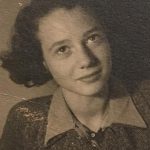 Just imagine living in a place where owning or even borrowing a book could get you, and anyone who gave you a book, killed. During the Holocaust, the Jews and other nationalities and religious groups who didn’t fit in with the Aryan race, were considered non-people, and therefore expendable. They were not allowed to live like normal people. They were considered “expendable.” Their lives were not worth the trouble it took to care for them, even their fiends and neighbors were expected to turn them over to be deported to the ghettos and even killed. They were often powerless to help themselves. Still, most of them never lost hope. When the Nazis began to occupy Czechoslovakia in 1939, the persecution of the Jews began almost immediately. Things were hard for everyone, but the children were often in more peril than anyone else. Many were to young to work and that made them even less “important” to the Nazis. To make matters worse, they were often separated from their parents…everything they knew was stripped from them.
Just imagine living in a place where owning or even borrowing a book could get you, and anyone who gave you a book, killed. During the Holocaust, the Jews and other nationalities and religious groups who didn’t fit in with the Aryan race, were considered non-people, and therefore expendable. They were not allowed to live like normal people. They were considered “expendable.” Their lives were not worth the trouble it took to care for them, even their fiends and neighbors were expected to turn them over to be deported to the ghettos and even killed. They were often powerless to help themselves. Still, most of them never lost hope. When the Nazis began to occupy Czechoslovakia in 1939, the persecution of the Jews began almost immediately. Things were hard for everyone, but the children were often in more peril than anyone else. Many were to young to work and that made them even less “important” to the Nazis. To make matters worse, they were often separated from their parents…everything they knew was stripped from them.
In 1942, when a girl named Dita Polachova was 13 years old, she and her parents were deported to Ghetto Theresienstadt life got even worse than it was before. Later they were sent to Auschwitz, where Dita’s father died. She and her mother were sent to forced labor in Germany and finally to a concentration camp called Bergen-Belsen. Dita’s mother died at Bergen-Belsen. Even in the face of so much sadness in her life, Dita never gave up. She risked her own life to protect a selection of eight books smuggled in by prisoners of Auschwitz. She stored the books in hidden pockets in her smock, and circulated them to the hundreds of children imprisoned in Block 31. Books were forbidden for the prisoners in the camps. The Nazis didn’t want them to have any knowledge of the outside world, or access to any kind of education materials or any books. The Nazis believed that none of these people were going to survive their stay in the camps anyway, so they didn’t need to do anything but work and die.
The prisoners had different ideas. Within the walls, there was a family camp known as BIIb. It was a place where the children could play and sing, but school was prohibited. Nevertheless, the Nazis were not able to enforce their will on the people. In spite of the orders of the Nazis, Fredy Hirsch established a small, yet influential school to house the children while their parents slaved in the camp. The materials were the biggest problem. The books, had to be hidden from the Nazi guards at all costs. Hirsch selected Dita, a brave and independent young woman from Prague to take over as the new Librarian of Auschwitz in January of 1944. Dita was a brave girl, who took her responsibility seriously.
While her parents are trying to stay alive in Auschwitz, Dita was fighting her own battle to preserve the books that bring joy to the children in the camp. The books are one of the few things that allow the children to escape from the walls in which they are surrounded, even if just for a moment. As the war progresses, Dita continues to diligently serve the teachers and children of Block 31. Then, Dita’s situation grew much worse. Her father passed away in the camp due to pneumonia. Dita and her mother are left alone to fight the battle on their own. Dita’s mother is grew weaker with age, and Dita knew she had to assume more responsibility. Dita is aware of the fact that the camp is simply a front to produce Nazi propaganda. She began to fight despair, as she struggles to feel the value in her life. By March 1944, the feeling of hopelessness grows. The Nazis announce that the inmates who arrived in September will be transferred to another division, which is really code for  murder. The BIIb continued until they heard that the Nazis are going to liquidate the family camp and separate the fit to work from the rest. Dita’s mother Liesl, was grown old and very weak by now. She was able to sneak into the group that is fit to work along with her daughter, narrowly. They were sent to the Bergen-Belsen concentration camp. Just when Dita gets to the point where she feels this might be the end, the Allied forces liberate the camp, but it is too late for Dita’s mother, who died just after the English arrived. Dita is now free, but it has been at great cost…the kind most of us cannot begin to comprehend. Dita later met and married Otto Kraus, an author, and they settled in Israel where they were both teachers.
murder. The BIIb continued until they heard that the Nazis are going to liquidate the family camp and separate the fit to work from the rest. Dita’s mother Liesl, was grown old and very weak by now. She was able to sneak into the group that is fit to work along with her daughter, narrowly. They were sent to the Bergen-Belsen concentration camp. Just when Dita gets to the point where she feels this might be the end, the Allied forces liberate the camp, but it is too late for Dita’s mother, who died just after the English arrived. Dita is now free, but it has been at great cost…the kind most of us cannot begin to comprehend. Dita later met and married Otto Kraus, an author, and they settled in Israel where they were both teachers.
 One of the criminal acts of Hitler and the Third Reich was to confiscate the riches of the countries they were occupying. It was not the worst of the atrocities, but it was up there. By confiscating the food and money of these countries, the Nazis left the people in those countries broke and starving. Even as the Third Reich began to know they were losing the war, there was hope that they would go into hiding, re-group, and rise again. If that was going to happen, they were going to need money, and the only way to insure that was to begin mass confiscation and hiding of the riches of these nations.
One of the criminal acts of Hitler and the Third Reich was to confiscate the riches of the countries they were occupying. It was not the worst of the atrocities, but it was up there. By confiscating the food and money of these countries, the Nazis left the people in those countries broke and starving. Even as the Third Reich began to know they were losing the war, there was hope that they would go into hiding, re-group, and rise again. If that was going to happen, they were going to need money, and the only way to insure that was to begin mass confiscation and hiding of the riches of these nations.
Lake Toplitz was located in a very remote area of Austria, southeast of Salzburg. In modern day Austria, the area is appropriately called The Dead Mountains. Basically, if you’re looking for somewhere to get away from it all, Lake Toplitz is a good choice. During the war, the lake’s remoteness made it the perfect place for the Nazis to test weapons…including torpedoes. It was also one of the places the Nazi elite fled to when it came time to make their last stand. That fact, in and of itself, makes it a logical place to hide funds for a future comeback of the Third Reich.
In 1945, Hitler’s Germany had only a few more weeks before their horrific reign ended, found themselves stuck in the middle, being crushed by the Russian tanks coming in from the east, and the Americans and British from the north. As their fronts collapsed, the Nazis made several efforts to hide their stolen wealth and treasure. The practice of hiding the wealth is well known, because a lot of that hidden wealth has already been discovered in mines, underground bunkers, and hastily buried fortifications.
Everyone seemed to be looking for the buried treasure left by the Nazis. At one time, a pair of treasure hunters announced they found the location of a buried German armored train in the hills of Poland. Their claim seemed 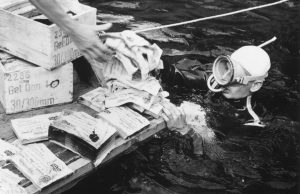 possible, so a search was held. In the end, it was determined that the “train” was nothing more than an ice covered rock formation. Still, the possibility of a treasure train is very real. Unfortunately, the big news about the “train” caused such a stir that another find was all but lost to the world.
possible, so a search was held. In the end, it was determined that the “train” was nothing more than an ice covered rock formation. Still, the possibility of a treasure train is very real. Unfortunately, the big news about the “train” caused such a stir that another find was all but lost to the world.
There had been stories about plunder the Nazis may have hidden in the cold, deep waters of Lake Toplitz, as the Allies closed in. Reports came out that the lake held iron boxes full of counterfeit British currency and the printing plates to make more…a part of Hitler’s Operation Bernhard, which was a plan to wreck the British economy by flooding the world with fake bank notes. That report turned out to be true, when dive crews recovered several chests stuffed with counterfeit cash in 1959. The divers reported there were more chests stuck in the mud, but they were too deep to recover. More stories about Nazi plunder at the bottom of Lake Toplitz surfaced. The nephew of one German officer made the claim that the Nazis sank chests loaded with gold into the lake. Plates from the lost fabled Russian Imperial Amber Room, which had also been rumored to be on the Nazi gold train in Poland, are also thought by others to be on the bottom of the icy lake. Along with treasure there are stories of weapons components, ammunition, rocket fuel, and maps showing the locations of even more stolen Nazi loot.
There have been many attempts to salvage treasure from the bottom of the lake over the years, with most of them ending in death. The lake is deep and cold, and has many tangled trees and branches that can trap a person. In 1983 the Austrian government declared the lake had been completely searched and anything of value removed. That turned out to be a fake story designed to discourage treasure hunters. Biologists studying the lake have turned up more boxes of counterfeit currency, rocket parts, weapons, mines and even a torpedo 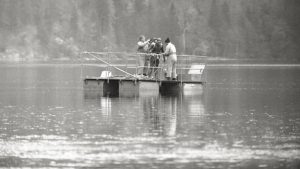 since the government report. Later, photographs from a submerged bunker surfaced, showing boxes with Cyrillic lettering. These are what led to the speculation that the boxes might contain panels from the Amber Room. The exact location of the bunker has been hidden from the public.
since the government report. Later, photographs from a submerged bunker surfaced, showing boxes with Cyrillic lettering. These are what led to the speculation that the boxes might contain panels from the Amber Room. The exact location of the bunker has been hidden from the public.
I expect that people will continue to try to find the treasures, even though claims will most likely be laid upon them immediately after they are located. The people who find them will probably only get the recognition for the find, rather than the right to keep the treasure. Maybe with an attorney who is good enough, they will walk away with a finders fee.
 When we think of war heroes, civilians seldom come to mind. The reality is that there are many, many civilian heroes in any war. Each of those civilian heroes has their own reasons to take the actions they take. The one similarity is that most of them simply cannot continue to support a government that is committing the atrocities they commit, and so they have to take action, or they can’t look themselves in the mirror again. Sometimes, a change of heart comes because they see the cruelty of the country they live in. Other times, the change comes when they see that their countrymen are not even safe from their own government. Finally, completely disillusioned, they find themselves without alternative options, when they come face to face with the enemy within their own boarders.
When we think of war heroes, civilians seldom come to mind. The reality is that there are many, many civilian heroes in any war. Each of those civilian heroes has their own reasons to take the actions they take. The one similarity is that most of them simply cannot continue to support a government that is committing the atrocities they commit, and so they have to take action, or they can’t look themselves in the mirror again. Sometimes, a change of heart comes because they see the cruelty of the country they live in. Other times, the change comes when they see that their countrymen are not even safe from their own government. Finally, completely disillusioned, they find themselves without alternative options, when they come face to face with the enemy within their own boarders.
Matvey Kuzmich Kuzmin was born on August 3, 1858 in the village of Kurakino, in the Velikoluksky District of Pskov Oblast. He was a self-employed farmer who declined the offer to join a kolkhoz or collective farm. He lived with his grandson and continued to hunt and fish on the territory of the kolkhoz “Rassvet” (Dawn). He was nicknamed “Biriuk” (lone wolf).
During World War II, the area Kuzmin lived in was occupied by the forces of Nazi Germany. In February 1942, Kuzmin had to help house a German battalion in the village of Kurakino. The German unit was ordered to pierce the Soviet defense in the area of Velikiye Luki by advancing into the rear of the Soviet troops dug in at Malkino Heights. Kuzmin had to do what he had to do…like it or not. On February 13, 1942, the German commander asked the 83 year old Kuzmin to guide his men to the Malkino Heights area, and even offered Kuzmin money, flour, kerosene, and a “Three Rings” hunting rifle for doing so. Kuzmin agreed, but he knew that with information on the proposed route, he could make a difference. He sent his grandson Vasilij to Pershino, about 3.5 miles from Kurakino, to warn the Soviet troops and to propose an ambush near the village of Malkino.
The plan was for Kuzmin to guide the German units through straining paths, through the night. He lead them to  the outskirts of Malkino at dawn. When they arrived, the village defenders and the 2nd battalion of 31st Cadet Rifle Brigade of the Kalinin Front attacked. The German battalion came under heavy machine gun fire and suffered losses of about 50 killed and 20 captured. In the midst of the ambush, a German officer realized that they had been set up and turned his pistol towards Kuzmin. He shot him twice. Kuzmin died during the fight. He was buried three days later with military honors. Later, he was reburied at the military cemetery of Velikiye Luki. He was posthumously named a Hero of the Soviet Union on May 8, 1965, becoming the oldest person named a Hero of the Soviet Union based on his age at death.
the outskirts of Malkino at dawn. When they arrived, the village defenders and the 2nd battalion of 31st Cadet Rifle Brigade of the Kalinin Front attacked. The German battalion came under heavy machine gun fire and suffered losses of about 50 killed and 20 captured. In the midst of the ambush, a German officer realized that they had been set up and turned his pistol towards Kuzmin. He shot him twice. Kuzmin died during the fight. He was buried three days later with military honors. Later, he was reburied at the military cemetery of Velikiye Luki. He was posthumously named a Hero of the Soviet Union on May 8, 1965, becoming the oldest person named a Hero of the Soviet Union based on his age at death.
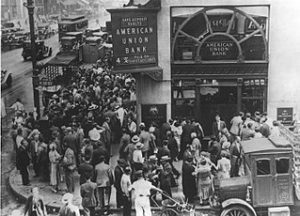 When we think of a bank, we expect that they will have an unlimited amount of money to cover any withdrawals the public might care to make. That thought really isn’t accurate at all. Banks typically hold only a fraction of deposits in cash at any one time, and lend out the rest to borrowers or purchase interest-bearing assets like government securities. As normal banking procedures occur, the money placed in bank care by depositors is loaned out to other people, but then replaced plus interest. The cash flow in the bank normally rolls merrily along in deposits, withdrawals, loans, and payments…as long as nothing goes wrong that is.
When we think of a bank, we expect that they will have an unlimited amount of money to cover any withdrawals the public might care to make. That thought really isn’t accurate at all. Banks typically hold only a fraction of deposits in cash at any one time, and lend out the rest to borrowers or purchase interest-bearing assets like government securities. As normal banking procedures occur, the money placed in bank care by depositors is loaned out to other people, but then replaced plus interest. The cash flow in the bank normally rolls merrily along in deposits, withdrawals, loans, and payments…as long as nothing goes wrong that is.
The stock market crash of October 1929 left the American public in a panic, about the economy, the future, and the stability of the banks. People were spending less and so the investments and loans began to decrease, which lead to a decline in production and employment. The ensuing snowball effect was further compounded when the nation’s economic woes led to a series of banking panics or “bank runs,” during which large numbers of anxious people withdrew their deposits in cash, forcing banks to liquidate loans, and ultimately leading to bank failure. The largest collapse was New York’s Bank of the United States in December 1931. The bank had more than $200 million in deposits at the time, making it the largest single bank failure in American history. Wealthy people began pulling their investment assets out of the economy. Bankruptcies were becoming more common, and peoples’ confidence in financial institutions, such as banks, rapidly eroded. Many of those people never fully trusted banks again after that. Some 650 banks failed in 1929, and the number rose to more than 1,300 the following year.
The last wave of bank runs continued through the winter of 1932 and into 1933. By that time, Democrat Franklin D. Roosevelt had won the presidential election over the Republican incumbent, Herbert Hoover. Almost immediately after taking office in early March, Roosevelt declared a national “bank holiday.” All banks were closed until they were determined to be solvent through federal inspection. Roosevelt called on Congress to come up with new emergency banking legislation to further aid the ailing financial institutions of America. The Banking Act of 1933 established the FDIC, or Federal Deposit Insurance Corporation. It also separated commercial and investment banking, and for the first time extended federal oversight to all commercial banks. The FDIC would insure commercial bank deposits of $2,500 (later $5,000) with a pool of money collected from the banks. Small, rural banks were in favor of deposit insurance, but larger banks, who worried they would end up subsidizing smaller banks, opposed it. The public supported deposit insurance overwhelmingly. Many hoped to recover some of the financial losses they had sustained through bank failures and closures. The FDIC did not insure investment products such as stocks, bonds, mutual funds or annuities. No federal law mandated FDIC insurance for banks, though some states required their banks to be federally insured.
In 2007, problems in the subprime mortgage market precipitated the worst financial crisis since the Great Depression. Twenty-five US banks had failed by late 2008. The most notable bankruptcy was Washington  Mutual Bank, the nation’s largest savings and loan association. A downgrade in the bank’s financial strength in September 2008 caused customers to panic despite Washington Mutual’s status as an FDIC-insured bank. Depositors withdrew $16.7 billion from Washington Mutual Bank over the next nine days. The FDIC subsequently stripped Washington Mutual of its banking subsidiary. It was the largest bank failure in US history. Congress passed the Dodd-Frank Wall Street Reform and Consumer Protection Act in 2011, which permanently raised the FDIC deposit insurance limit to $250,000 per account. The Dodd-Frank Act expanded the FDIC’s responsibilities to include regular risk assessments of all FDIC-insured institutions.
Mutual Bank, the nation’s largest savings and loan association. A downgrade in the bank’s financial strength in September 2008 caused customers to panic despite Washington Mutual’s status as an FDIC-insured bank. Depositors withdrew $16.7 billion from Washington Mutual Bank over the next nine days. The FDIC subsequently stripped Washington Mutual of its banking subsidiary. It was the largest bank failure in US history. Congress passed the Dodd-Frank Wall Street Reform and Consumer Protection Act in 2011, which permanently raised the FDIC deposit insurance limit to $250,000 per account. The Dodd-Frank Act expanded the FDIC’s responsibilities to include regular risk assessments of all FDIC-insured institutions.
 I was thinking about Sir Nicholas Winton, who saved 669 Jewish children from the brutal activities, and almost certain death that was being dealt out by Hitler during World War II. Of course, Sir Winton wasn’t the only person who stepped up to help wage their own battle against the Third Reich. Many people in Nazi occupied areas took in families in desperate need. When word is the deportations to the ghettos came down, some parents had to make the horrible choice to give their children to friends and neighbors to “hide” them in plain site, raising them as their own, and everyone hoping to be able to return them to their own parents after the war. The problem was that so many of the parents were killed in the camps.
I was thinking about Sir Nicholas Winton, who saved 669 Jewish children from the brutal activities, and almost certain death that was being dealt out by Hitler during World War II. Of course, Sir Winton wasn’t the only person who stepped up to help wage their own battle against the Third Reich. Many people in Nazi occupied areas took in families in desperate need. When word is the deportations to the ghettos came down, some parents had to make the horrible choice to give their children to friends and neighbors to “hide” them in plain site, raising them as their own, and everyone hoping to be able to return them to their own parents after the war. The problem was that so many of the parents were killed in the camps.
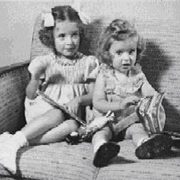
After the war was over, many of these children did not remember their parents. They were too young when they were given to people to care for. That created a new and almost more difficult situation. Some of the foster parents had fallen in love with the children in their care, and the viler knew no other family. Still, they were not their children. It was a heart wrenching situation. The other problem was that due to bombings, many of the homes housing these “hidden” children were gone, and they had no way to let anyone know where they had gone. That made it even more difficult to return the children. And some people couldn’t bear to part with the children anyway. 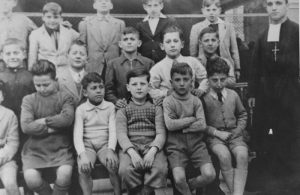 That left parents devastated and without recourse.
That left parents devastated and without recourse.
Some children were reunited with their parents quickly and some took years…if ever. I wonder about the ones that took years, because of the immense loss they must have felt over so much lost time. You just can’t get that time back, and you can’t change whatever the children endured in their lives. Everyone just had to let go of the past and go forward, as best they could. There was no way to go back to their pre-war lives. Each had changed, some were forever missing, and some were lost to the horrific hatred that was Hitler’s Third Reich.
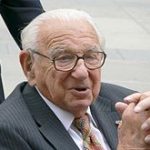 His name was Sir Nicholas George Winton MBE, but in his early years, he had not been bestowed with such an honor as knighthood. That came about much later in his life. Sir Winton was born on May 19, 1909 in Hampstead, London, England. He was a British humanitarian, born to German-Jewish parents, Rudolph Wertheim (1881–1937), a bank manager, and his wife Barbara (née Wertheimer, 1888–1978) who had emigrated to Britain. His parents had moved to London two years before he was born. The family name was Wertheim, but they changed it to Winton in an effort at integration. They also converted to Christianity, and Winton was baptized. God had a plan for Sir Winton’s life, although he would not know that for years.
His name was Sir Nicholas George Winton MBE, but in his early years, he had not been bestowed with such an honor as knighthood. That came about much later in his life. Sir Winton was born on May 19, 1909 in Hampstead, London, England. He was a British humanitarian, born to German-Jewish parents, Rudolph Wertheim (1881–1937), a bank manager, and his wife Barbara (née Wertheimer, 1888–1978) who had emigrated to Britain. His parents had moved to London two years before he was born. The family name was Wertheim, but they changed it to Winton in an effort at integration. They also converted to Christianity, and Winton was baptized. God had a plan for Sir Winton’s life, although he would not know that for years.
On the eve of World War II, Sir Winton knew what his calling had been, and he quietly set about orchestrating the rescue of 669 children, most of them Jewish, from Czechoslovakia. Sir Winton quickly found homes for the children and arranged for their safe passage to Britain. The operation was known as the Czech Kindertransport, which is German for “children’s transport, but it would not be called that right away. The transport was not a official operation, and was not sanctioned as such. He worked largely alone to set this up, and most people knew nothing about it for over 50 years, but the children did not forget the man they called the British Schindler, who had saved their lives.
Then, in 1988, he was invited to the BBC television program “That’s Life!.” It was a surprise party of sorts. Little 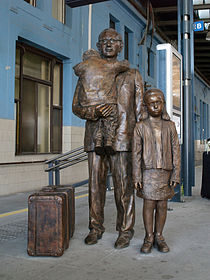 did Sir Winton know, but his secret was no longer such a secret. Arriving at the show, Sir Winton was seated in a room full of people he did not know. Soon, the truth was told to him, and he found out that the “audience” was in fact a number of the children he had rescued all those years ago. The grateful children, now grown adults, wanted to reunite with the man who had saved then all those years ago. It was the British press who celebrated him and dubbed him the “British Schindler.” Sir Winton was brought to tears, as he looked around him at all of these people who owed him their very lives, but his story did not end there. In 2003, Nicholas Winton became Sir Nicholas George Winton MBE (Most Excellent Order of the British Empire), when he was knighted by Queen Elizabeth II for “services to humanity, in saving Jewish children from Nazi Germany occupied Czechoslovakia.” Then, on October 28, 2014, he was awarded the highest honor of the Czech Republic, the Order of the White Lion (1st class), by Czech President Miloš Zeman. The little German-Jewish boy, whose family converted to Christianity, and who always felt a love for humanity and those in need, had become a great man indeed. God did have a plan for his life, and Sir Winton had made God proud. Sir Nicholas George Winton MBE passed away peacefully in his sleep on July 1, 2015, at Wexham Park Hospital, Slough, Berkshire, England, at the age of 106 years, having lived a full life. After the war, Winton worked for the International Refugee Organization and then the International Bank for Reconstruction and Development in Paris, where he met Grete Gjelstrup, a Danish secretary and accountant’s daughter. They married in her hometown of Vejle on October 31, 1948. The couple settled in Maidenhead, England, where they raised their three children: Nick (born 1951), Barbara (born 1954) and the youngest Robin (1956–1962), who was born
did Sir Winton know, but his secret was no longer such a secret. Arriving at the show, Sir Winton was seated in a room full of people he did not know. Soon, the truth was told to him, and he found out that the “audience” was in fact a number of the children he had rescued all those years ago. The grateful children, now grown adults, wanted to reunite with the man who had saved then all those years ago. It was the British press who celebrated him and dubbed him the “British Schindler.” Sir Winton was brought to tears, as he looked around him at all of these people who owed him their very lives, but his story did not end there. In 2003, Nicholas Winton became Sir Nicholas George Winton MBE (Most Excellent Order of the British Empire), when he was knighted by Queen Elizabeth II for “services to humanity, in saving Jewish children from Nazi Germany occupied Czechoslovakia.” Then, on October 28, 2014, he was awarded the highest honor of the Czech Republic, the Order of the White Lion (1st class), by Czech President Miloš Zeman. The little German-Jewish boy, whose family converted to Christianity, and who always felt a love for humanity and those in need, had become a great man indeed. God did have a plan for his life, and Sir Winton had made God proud. Sir Nicholas George Winton MBE passed away peacefully in his sleep on July 1, 2015, at Wexham Park Hospital, Slough, Berkshire, England, at the age of 106 years, having lived a full life. After the war, Winton worked for the International Refugee Organization and then the International Bank for Reconstruction and Development in Paris, where he met Grete Gjelstrup, a Danish secretary and accountant’s daughter. They married in her hometown of Vejle on October 31, 1948. The couple settled in Maidenhead, England, where they raised their three children: Nick (born 1951), Barbara (born 1954) and the youngest Robin (1956–1962), who was born  with Down syndrome. At the family’s insisted Robin stayed with them, rather than being sent to a residential home. Sir Winton’s son, Robin died of meningitis, the day before his sixth birthday. The death was devastating for Winton and he founded a local support organization that later became Maidenhead Mencap. Winton stood, unsuccessfully, for the town council in 1954, but later found work in the finance departments of various companies. His wife, Grete preceded him in death in 1999. Sir Nicholas George Winton MBE was a truly remarkable man.
with Down syndrome. At the family’s insisted Robin stayed with them, rather than being sent to a residential home. Sir Winton’s son, Robin died of meningitis, the day before his sixth birthday. The death was devastating for Winton and he founded a local support organization that later became Maidenhead Mencap. Winton stood, unsuccessfully, for the town council in 1954, but later found work in the finance departments of various companies. His wife, Grete preceded him in death in 1999. Sir Nicholas George Winton MBE was a truly remarkable man.

 Seldom does it happen that money from a robbery is never recovered, but that is the case for approximately $28,000 in gold and silver coins, which have been missing for more than a century. The money came from the little known Wham Paymaster Robbery, which occurred near Pima, Arizona. Eight suspects were caught and tried for the crime, but in the end, they walked away free men. The circumstances of the robbery remain an unsolved mystery to this day. The robbery of US Army Paymaster, Major Joseph Washington Wham occurred on May 11, 1889 in the early morning hours. Wham was preparing to make the trip from Fort Grant to Fort Thomas to pay the soldiers’ salaries. The day before, he had distributed the pay to Fort Grant. That day, he was to pay the men at Fort Thomas, Camp San Carlos, and Fort Apache.
Seldom does it happen that money from a robbery is never recovered, but that is the case for approximately $28,000 in gold and silver coins, which have been missing for more than a century. The money came from the little known Wham Paymaster Robbery, which occurred near Pima, Arizona. Eight suspects were caught and tried for the crime, but in the end, they walked away free men. The circumstances of the robbery remain an unsolved mystery to this day. The robbery of US Army Paymaster, Major Joseph Washington Wham occurred on May 11, 1889 in the early morning hours. Wham was preparing to make the trip from Fort Grant to Fort Thomas to pay the soldiers’ salaries. The day before, he had distributed the pay to Fort Grant. That day, he was to pay the men at Fort Thomas, Camp San Carlos, and Fort Apache.
Wham, along with his clerk, William Gibbon, and Private Caldwell, his servant and mule tender, climbed into a canopied wagon driven by Buffalo Soldier, Private Hamilton Lewis for the 46 mile trip to Fort Thomas. The payroll Wham was still in possession of was more than $28,000 in gold and silver coins. It was locked in an oak strongbox in the wagon. Given the amount of money Wham was carrying, he was heavily escorted by nine Buffalo Soldiers of the 24th Infantry on horseback, as well as a wagon that carried two privates of the 10th Cavalry (also an African-American regiment) that was driven by a civilian employee of the Quartermaster Department. Everyone was heavily armed, except Wham, his clerk and the two drivers. An African-American female gambler named Frankie Campbell, joined them at the last minute. She wanted to ride along with them to be in Fort Thomas when the soldiers got paid…to stir up a game or two, I’m sure.
About 15 miles west of Pima in the Gila River Valley, just after midday, the caravan came to a stop. A large boulder was blocking the road, and the wagons were unable to get around it. The soldiers lay down their weapons in order to dislodge the large rock. They barely got started when a cry came from a ledge some 60 feet above on the adjacent hill, “Look out, you black sons of bitches!” and bullets began to hail down upon the soldiers. Three of the 12 mules pulling the wagons were killed and the other animals panicked, rearing and pulling both vehicles off the road. The soldiers ran for their guns and took cover to fight the barrage of bullets raining down on them from the hills. Sergeant Benjamin Brown was shot but continued to return fire with his revolver. Private James Young ran through heavy gunfire and carried Brown more than 100 yards to safety. Corporal Isaiah Mays then took command, ordering the entourage to retreat to a creek bed about 300 yards away, while Major Wham strongly protested. The battle continued to rage on for about a half an hour as the soldiers valiantly tried to protect the payload. However, eight of Wham’s eleven-man escort were severely wounded and the battle had become extremely one-sided. During all this, gambler, Frankie Campbell, who had been riding ahead of the caravan, had been thrown from her horse and had taken cover.
With the soldiers hidden, wounded, and severely out gunned, five bandits then made their way to the wagon. Once there, they cracked the strongbox with an ax, and carried off the U.S. Treasury sacks filled with the coins. The soldiers counted 12 outlaws, who made their escape. At about 3:00pm those, who could manage, made their way from the creek bed to the wagons. They spliced harnesses together, gathered some of the surviving mules, and finally made their way to Fort Thomas, arriving about 5:30pm. The soldiers left, Frankie Campbell to tend to the severely wounded, including Sergeant Benjamin Brown. These men would be brought in later. Amazingly, all of the soldiers would survive their wounds, so she must have done a good job with their care.
Amazingly, several of the bandits, who had not thought to cover their faces during the gun battle, were recognized and very soon arrested. US Deputy Marshal William Kidder Meade, and the Graham County Sheriff arrested 11 men, most of whom were citizens of Pima, Arizona. Seven were bound over for trial. The men were Gilbert Webb, the Mayor of Pima at the time. Webb was the suspected leader of the gang. Also arrested was his son, Wilfred. These men were already suspected of numerous thefts in the area. Along with the Webbs, brothers Lyman and Warren Follett, as well as David Rogers, Thomas Lamb, and Mark Cunningham, all of whom worked as cowboys for Gilbert Webb. Strangely, the men were charged with the robbery, but no one was ever charged with the shooting.
The trial in Federal Court in Tucson was held in November lasted 33 days. It was big news in the Southwest. With all the witnesses, I cant figure out how they could not be found guilty, but from the beginning, the trial involved major politics and infighting, including removing the original judge. In all, 165 witnesses testified at the trial, including five Buffalo Soldiers who identified three of the accused. Another witness testified that he had personally seen some of the men hiding the loot in a haystack and burning the US treasury sacks. Several other witnesses testified that they had seen members of the accused in the area of the ambush the day before…probably setting up their “hideouts” from which the ambush took place. Strangely, Frankie Campbell, who had stated she recognized several of the bandits, including the leader, Gilbert Webb, was never called to testify. The defense lawyer was the famed Marcus Aurelius Smith, and in the end all of the men were acquitted.
Afterward, it was widely claimed that political pressure from the acting governor allowed the thieves to go free. The entire case was a hotbed of religion, racism, and politics, as Pima, Arizona was founded as a Mormon Colony, of which Gilbert Webb was the mayor, one of the most influential men in the area, and came from a long line of pioneer Mormons. He was also known in the area as a generous man, providing jobs for struggling neighbors, extending credit, and providing provisions. Though most of the other accused men were not Mormons, they all lived in the Mormon colony, having many ties to the church through friends and relatives. Be it politics or religion, a great injustice was done that day. Many locals viewed the robbery and trial as an embarrassing disgrace to the town and its people, and to talk about it about might offend friends or neighbors, or bring shame upon the colony. Therefore, the robbery was kept largely under wraps. The locals called the robbers “Latter-Day Robin Hoods.”
In the meantime, Major Joseph Washington Wham, as the commanding officer, was held accountable for the loss of the money but was later absolved of any guilt. Two of the Buffalo Soldiers were awarded the Medal of Honor for their part in the gun battle with the bandits. Although shot in the abdomen, Sergeant Benjamin Brown continued the fight until he was further wounded in both arms. Corporal Isaiah Mays also received the Medal of Honor, as near the end of the gun battle, though shot in the legs, he “walked and crawled two miles to Cottonwood Ranch and gave the alarm.” Other Buffalo Soldiers cited for bravery in the incident received the Certificate of Merit. These included Hamilton Lewis, Squire Williams, George Arrington, James Wheeler, Benjamin Burge, Thomas Hams, James Young, and Julius Harrison of the 10th Cavalry and 24th Infantry. US 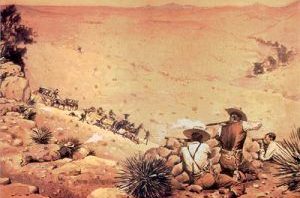
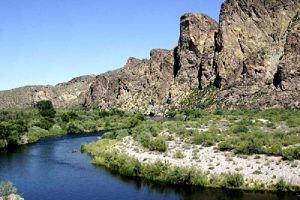 Deputy Marshal Meade, who would bring in the bandits, would say of the soldiers, “I am satisfied a braver or better defense could not have been made under like circumstances.” Throughout the years, the robbery has created a number of various treasure tales, suggesting that some of the coins are still hidden in the area somewhere. However; with all of the suspects set free, this would seem doubtful.
Deputy Marshal Meade, who would bring in the bandits, would say of the soldiers, “I am satisfied a braver or better defense could not have been made under like circumstances.” Throughout the years, the robbery has created a number of various treasure tales, suggesting that some of the coins are still hidden in the area somewhere. However; with all of the suspects set free, this would seem doubtful.
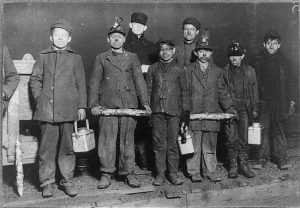
 Most of us have heard, either from our dads, grandfathers. or great grandfathers about how they or their ancestors had to quit school at an early age to work and help support the family. Life at the turn of the 20th Century was not easy. With the great depression, and poverty everywhere, and no real child labor laws, and the Industrial Revolution in full swing, the kids had little choice but to go out and help their families put food on the table. At that time in history, there were no real child labor laws in place, and there was a need that had to be filled. Whole families were in danger of starvation. The family had to get some money soon. Exceptions were made.
Most of us have heard, either from our dads, grandfathers. or great grandfathers about how they or their ancestors had to quit school at an early age to work and help support the family. Life at the turn of the 20th Century was not easy. With the great depression, and poverty everywhere, and no real child labor laws, and the Industrial Revolution in full swing, the kids had little choice but to go out and help their families put food on the table. At that time in history, there were no real child labor laws in place, and there was a need that had to be filled. Whole families were in danger of starvation. The family had to get some money soon. Exceptions were made.
Because of the circumstances of the times, and the need to eat, the nation’s children went to work. They worked in coal mines, factories, agriculture, and every other menial job they could get. So many of these jobs would have detrimental affects on the health of the workers. It was not unusual to find whole families or father-son pairs who were hired together. Unfortunately, children were not given jobs that suited their status as young, impressionable people who aren’t able to really care for themselves, much less do a skilled job. The child laborers were often given the jobs adults physically couldn’t accomplish. That sounds strange to us, but it meant crawling into tiny places the adults could not fit through. As an example, in factories, children were sent into the tiny, cramped interiors of the machines. Their task was to fix mechanisms that the adults simply couldn’t reach. This was dangerous work, and even with doing things the adults couldn’t, children received lower pay than the adults who depended on them.
The small stature of the children ensured that they often had the most dangerous jobs available in the coal mines too. As greasers, the children were constantly in danger of being crushed by carts loaded down with coal, as they ran up and down the tram tracks, a heavy bucket of grease on each arm, making sure the tram axels were appropriately greased at all times. Nippers (also called trappers) were children who had the dangerous responsibility of opening and closing the shaft doors as coal cars came hurtling down the sloped tracks. Boys who fell asleep in the total stillness and darkness…sometimes a mile beneath the surface…would be crushed if they failed to lift the door.
Eventually, activists began to take issue with the treatment of children in positions like these. One photographer…Lewis Hine made it his personal mission to document the situation of children in the coal fields of 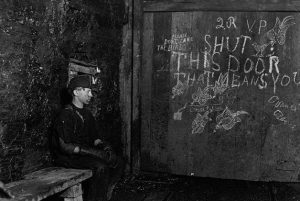
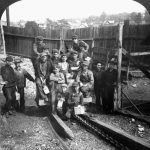 Appalachia. Because of his persistence, we have a cache of images documenting this era of American child labor. These and many other images led the US government to pass the Keating-Owens Child Labor Act of 1916. The act created a minimum age of 16 for mine workers, as well as instating the eight-hour workday. Then, shockingly, this act was deemed unconstitutional. The child labor issues continued until the 1930s, when the New Deal brought permanent reform for child laborers.
Appalachia. Because of his persistence, we have a cache of images documenting this era of American child labor. These and many other images led the US government to pass the Keating-Owens Child Labor Act of 1916. The act created a minimum age of 16 for mine workers, as well as instating the eight-hour workday. Then, shockingly, this act was deemed unconstitutional. The child labor issues continued until the 1930s, when the New Deal brought permanent reform for child laborers.
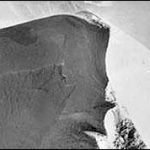
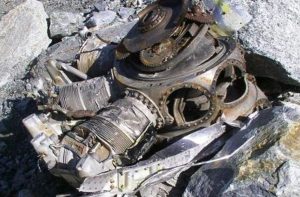 All seemed normal that January 24th, 1966 as the Air India Flight 101, a Boeing 707 was making its regular run from Bombay to New York, but it was not truly a normal flight at all. In reality, the plane was too low, and to make matters worse, there was a fog bank hanging over Mount Blanc in the Alps. There were 117 people onboard the plane, when it careened into the side of the mountain at 8:00am local time, hitting just fifty feet below the summit. If only they could have been fifty feet higher, it would have been just a very close call.
All seemed normal that January 24th, 1966 as the Air India Flight 101, a Boeing 707 was making its regular run from Bombay to New York, but it was not truly a normal flight at all. In reality, the plane was too low, and to make matters worse, there was a fog bank hanging over Mount Blanc in the Alps. There were 117 people onboard the plane, when it careened into the side of the mountain at 8:00am local time, hitting just fifty feet below the summit. If only they could have been fifty feet higher, it would have been just a very close call.
The plane was preparing to land at the Geneva Airport in Switzerland. Onboard was the Indian Atomic Energy Commission, Dr Homi Jehangir Bhabha, who was on his way to Vienna. Six passengers were British, and the rest were Indian nationals…46 of those were sailors. The plane was a few minutes behind schedule as it made its descent, but the captain of the Air India Boeing 707, was one of the airline’s most experienced pilots, and all seemed well. The pilot had radioed the control tower a few minutes earlier to report that his instruments were working fine and the aircraft was flying at 19,000 feet, which was at least 3,000 feet higher than the Mont Blanc summit…but he wasn’t, or he was descending faster than he realized.
Rescue teams were dispatched immediately, and they found wreckage scattered on the south-west side of the Mount Blanc, about 1,400 feet below the summit. Mountain guide, Gerard Devoussoux, who was one of the first to arrive at the crash site, said: “Another 50 feet and the plane would have missed the rock. It made a huge crater in the mountain. Everything was completely pulverized. Nothing was identifiable except for a few letters and packets.” The site was devastating, and I’m sure the rescue teams felt sick at the sight of it. Planes that crash seldom leave bodies in one piece. French authorities radioed back the news that there was virtually no hope of survivors shortly after landing in the area.
When inclement weather moved in, the search had to be called off. The bad weather and poor visibility made the rescue efforts impossible. The airport quickly filled with relatives of the passengers involved in the disaster, all of whom were in tears after airport officials broke the news of the crash. Robert Bruce, from Tooting, who was waiting for his parents to arrive, said: “I am so choked I cannot even cry. I will just go home and collapse. As far as I am concerned my world has come to an end.”
The cause of the crash was determined to be pilot error. The pilot misunderstood the directions he was given with devastating results. Another crash had occurred at the same place 16 years earlier, killing 48 people. The  Alps are mountains that receive a lot of mountain climbing traffic every year. Over the years climbers have come across plane parts, as well as body parts. More recently, a young French alpinist approaching the summit of Mont Blanc, saw a metal box poking out of the ice and snow on the shoulder of western Europe’s highest mountain. The box contained precious gems…including emeralds, rubies, and sapphires…worth hundreds of thousands of euros. The box had been there for over 50 years. The honest climber turned the gems in to authorities, but no one has claimed them yet. If they remain unclaimed, the could be returned to the climber, who has not been named.
Alps are mountains that receive a lot of mountain climbing traffic every year. Over the years climbers have come across plane parts, as well as body parts. More recently, a young French alpinist approaching the summit of Mont Blanc, saw a metal box poking out of the ice and snow on the shoulder of western Europe’s highest mountain. The box contained precious gems…including emeralds, rubies, and sapphires…worth hundreds of thousands of euros. The box had been there for over 50 years. The honest climber turned the gems in to authorities, but no one has claimed them yet. If they remain unclaimed, the could be returned to the climber, who has not been named.
 These days there aren’t many people who haven’t heard of the Santa Ana winds, the California wildfires, or this year, the burning of Australia. We hear all about how global warming is the cause of the tragic fires and loss of both vegetation and life, human and animal. I agree with the analogy that the fires in Australia are horrific, but the cause…well, that has been determined to be, not global warming, draught, or lightning, but rather arson…ARSON!! Disgusting just isn’t a big enough word for what that is.
These days there aren’t many people who haven’t heard of the Santa Ana winds, the California wildfires, or this year, the burning of Australia. We hear all about how global warming is the cause of the tragic fires and loss of both vegetation and life, human and animal. I agree with the analogy that the fires in Australia are horrific, but the cause…well, that has been determined to be, not global warming, draught, or lightning, but rather arson…ARSON!! Disgusting just isn’t a big enough word for what that is.
I can’t imagine why anyone would choose to burn something…anything. You can call it a sickness, and maybe it is, but that cannot be an excuse. If we allow such an excuse, more and more people will use it, take out their frustrations on things around them, and then expect to be excused because they are “sick.” At this point, firefighters are battling wildfires across Australia. Meanwhile, the police in New South Wales have arrested 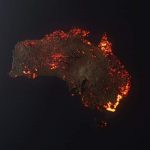 dozens of people for offenses related to fires, including 24 for deliberately lighting fires and three for looting fire-ravaged communities. There is also a story saying that 183 to 200 people are suspected of “fire-related offenses since November 8th, including for ‘allegedly discarding a lighted cigarette or match on land,’ but no verification as to the exact charges being lodged.
dozens of people for offenses related to fires, including 24 for deliberately lighting fires and three for looting fire-ravaged communities. There is also a story saying that 183 to 200 people are suspected of “fire-related offenses since November 8th, including for ‘allegedly discarding a lighted cigarette or match on land,’ but no verification as to the exact charges being lodged.
It is sad that the most common motive for wildfire arson is crime concealment. Fires are set for the purpose of covering up a murder or burglary or to eliminate evidence left at a crime scene. Fires have also been known to be set to further social, political, or religious causes. The fire set to cover up a crime, while horrific, is at least explainable, but fires set for political, social, or religious reasons is completely disgusting. There is just no excuse for the loss of homes businesses, and lives, human and animal, that could excuse such destruction. One fire, set to cover up a crime is reasonable, though disgusting, but these are all over Australia. And while one 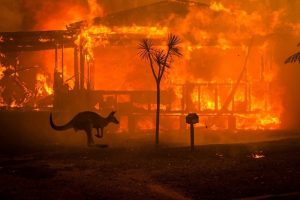 person might be a “sick” arsonist, to find 24 to 200 “sick” arsonists, is not even possible. The other thought that makes me so mad I could scream, is that even if this is socially, politically, or religiously motivated, what is the point? What are they trying to prove? All I can say is, that I hope they find the people who did this and that they give them the maximum sentence possible. I don’t know Australian law, so I don’t know if they have the death penalty or not, but I think these people should get it, if they do. And if not, solitary confinement for the rest of their lives might…just might, be punishment enough, but I really doubt it.
person might be a “sick” arsonist, to find 24 to 200 “sick” arsonists, is not even possible. The other thought that makes me so mad I could scream, is that even if this is socially, politically, or religiously motivated, what is the point? What are they trying to prove? All I can say is, that I hope they find the people who did this and that they give them the maximum sentence possible. I don’t know Australian law, so I don’t know if they have the death penalty or not, but I think these people should get it, if they do. And if not, solitary confinement for the rest of their lives might…just might, be punishment enough, but I really doubt it.

